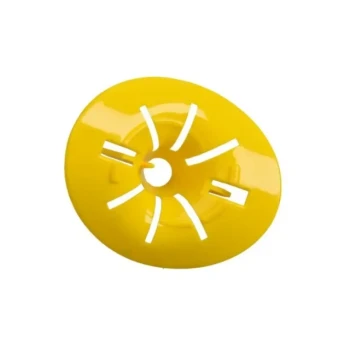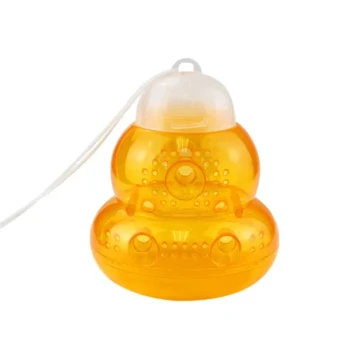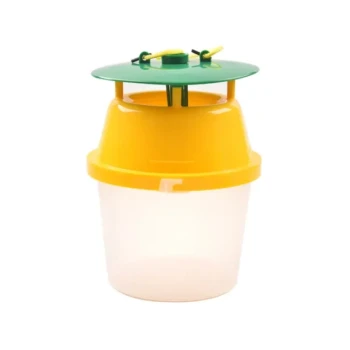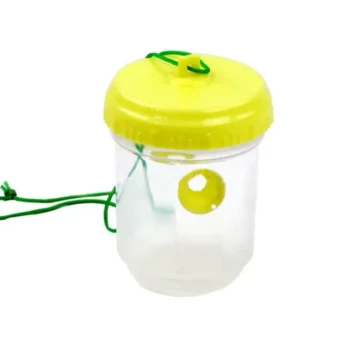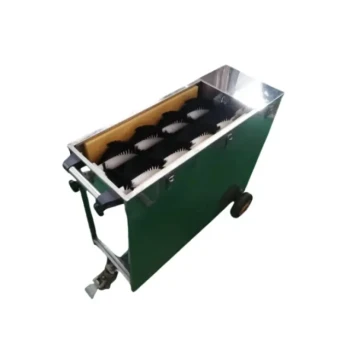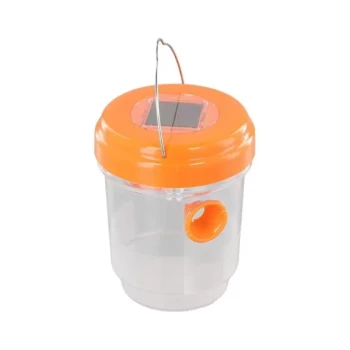A propolis trap is a specialized screen for a beehive designed to encourage bees to fill its small gaps with propolis, allowing for a clean and efficient harvest. It resembles a queen excluder but has smaller, more numerous openings that bees instinctively seal to protect their colony from drafts and invaders.
The core function of a propolis trap is to leverage a bee's natural behavior. It creates a "problem"—a drafty, insecure ceiling—that the bees are compelled to "solve" using their own antimicrobial sealant, propolis, which the beekeeper can then collect.
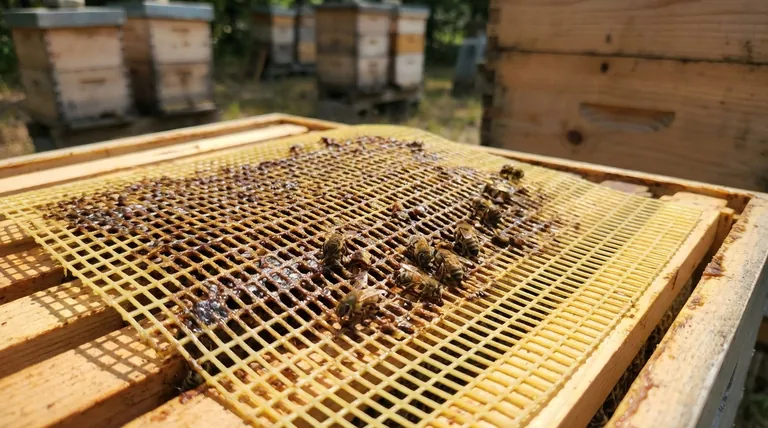
What is Propolis and Why Do Bees Make It?
To understand how a propolis trap works, one must first understand the material it is designed to collect. Propolis is a critical component of the hive's health and structure.
From Tree Resin to "Bee Glue"
Propolis begins as a sticky resin produced by trees to protect their buds and heal wounds. Bees gather these resins on their back legs, much like pollen, and carry them back to the colony.
Inside the hive, they mix these resins with beeswax and their own secretions to create the final product: propolis, often called "bee glue."
The Hive's Natural Sealant
Bees are meticulous architects that crave a secure, draft-free environment. They use propolis to seal any unwanted cracks, gaps, or uneven surfaces within the hive.
This includes smoothing the edges of frames and gluing down hive components, which creates a stable and well-insulated home.
A Colony's Immune System
Beyond its structural use, propolis is a powerful chemical shield. It contains potent antibacterial, antifungal, and antimicrobial properties.
Bees coat the interior of the hive with a thin layer of propolis, effectively sterilizing the environment and protecting the colony from pathogens.
How a Propolis Trap Works
The trap is a simple yet ingenious device that exploits the bees' innate drive to seal and protect their living space.
Purposeful Design
A propolis trap is a flat, reusable mat or screen, typically made of plastic. Its design features many small slits or holes, far too small for a bee to pass through but large enough to be perceived as a draft or crack.
Strategic Placement
The trap is most commonly placed on top of the uppermost hive box, directly underneath the main hive cover. It essentially replaces the standard inner cover.
Leveraging Bee Instinct
When the bees encounter the trap, their instincts kick in. They perceive the thousands of tiny gaps as a massive structural flaw—a leaky roof that compromises the security and climate control of the hive.
Their immediate response is to systematically seal every single hole with propolis, eventually filling the entire trap.
Common Considerations for Use
While effective, a propolis trap is specialized equipment. It's not a standard component for every beekeeper.
A Focus on a Secondary Product
The primary purpose of a propolis trap is to harvest propolis, not honey. It is a tool for beekeepers looking to create value-added products like salves or tinctures, or for those interested in natural remedies.
Not Essential for Hive Health
While propolis is vital for bees, harvesting it via a trap does not harm the colony. The bees will continue to apply propolis where needed inside the hive; the trap simply encourages overproduction in an easy-to-collect location.
Requires an Extra Step
Once the trap is filled, the beekeeper removes it. The propolis is typically made brittle by freezing the trap, which allows it to be easily cracked off the screen for collection. This adds an extra process to your hive management routine.
Making the Right Choice for Your Goal
Deciding whether to use a propolis trap depends entirely on what you hope to achieve with your beehives.
- If your primary focus is honey production: A propolis trap is an unnecessary piece of equipment that will not contribute to your main goal.
- If your primary focus is creating value-added hive products: This is an essential, low-cost tool for cleanly harvesting a valuable and versatile medicinal substance.
- If your primary focus is simply understanding bee behavior: Using a trap offers a fascinating look into the colony's instinct to protect and perfect its home.
By understanding the natural impulses of the honeybee, beekeepers can work in partnership with them to harvest this remarkable substance.
Summary Table:
| Aspect | Description |
|---|---|
| Function | Encourages bees to seal gaps with propolis for easy harvest. |
| Placement | On top of the uppermost hive box, under the main cover. |
| Best For | Beekeepers focused on value-added products like salves and tinctures. |
| Key Benefit | Provides a clean, efficient method to collect a valuable hive product. |
Ready to add propolis harvesting to your beekeeping operation?
As a trusted wholesale supplier for commercial apiaries and distributors, HONESTBEE provides the durable, high-quality equipment you need to diversify your product line and maximize hive productivity. Our propolis traps are designed for efficiency and reuse, helping you tap into the growing market for natural bee products.
Contact our expert team today to discuss your bulk equipment needs and discover how our solutions can support your business growth.
Visual Guide
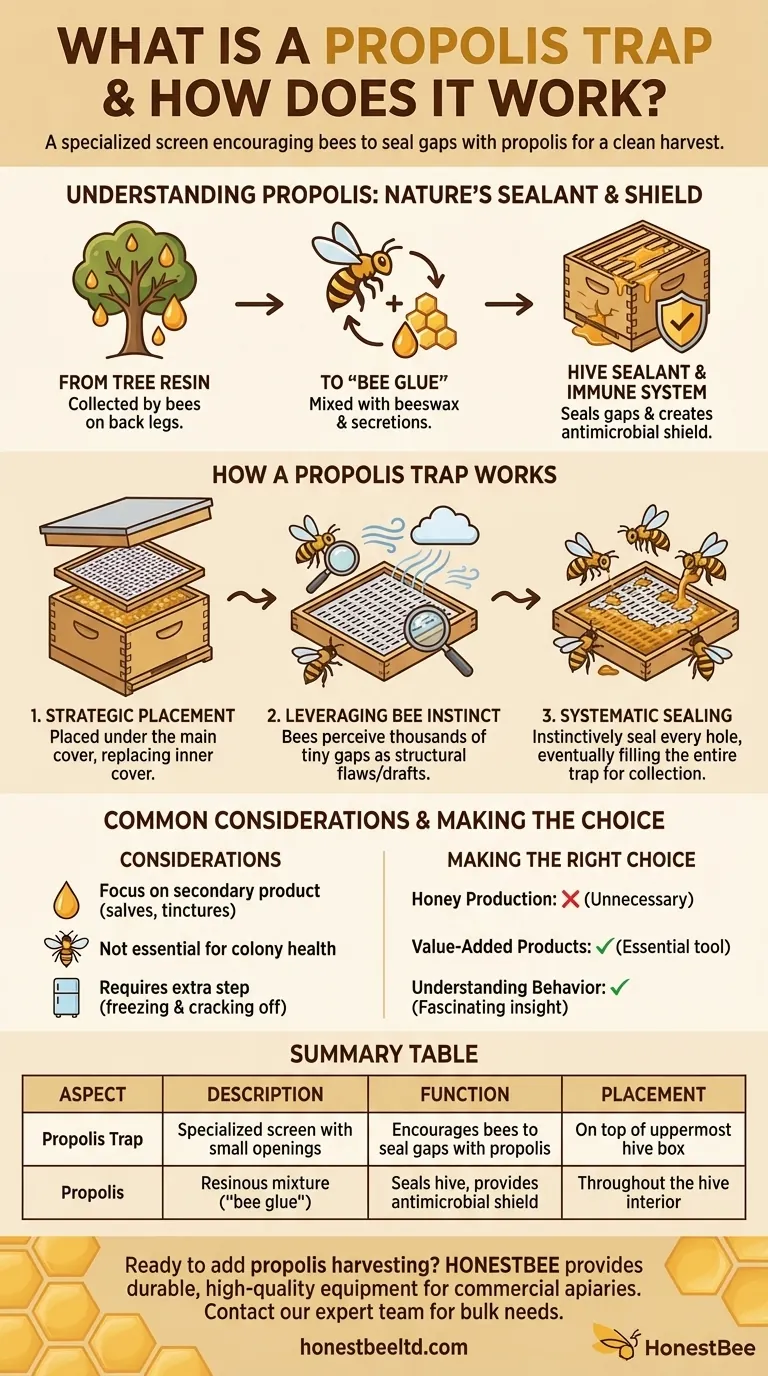
Related Products
- Reusable Wasp Trap Bottle Converter
- Removable Plastic Pollen Trap With Ventilated Tray for Bees Pollen Collector
- Gourd Shaped Hanging Wasp Trap Professional Wasp Catcher
- Plastic Beetle Blaster Trap Beekeeping Tools and Supplies
- Professional Bucket Style Wasp and Moth Pheromone Trap
People Also Ask
- What are the main uses of bee-collected pollen? A Guide for Apiary Management and Product Sales
- What are important considerations for responsible pollen collection? Sustain Your Hive's Health & Harvest
- What is a pollen trap and how does it work? A Guide to Harvesting Bee Pollen
- What is the recommended number of beetle traps per hive? Optimize Your Hive's Beetle Defense
- What are the key features of an effective pollen trap? Maximize Harvests & Protect Hive Health
